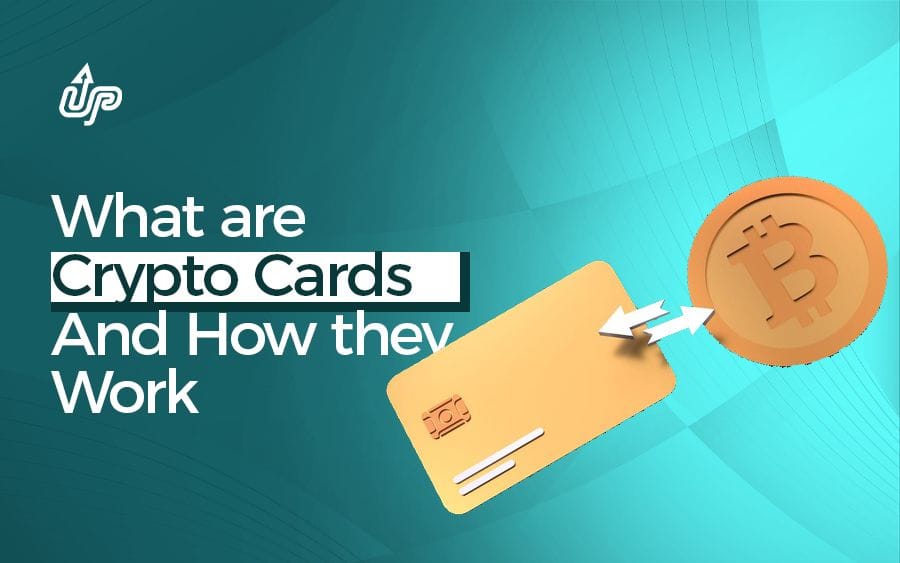What are Crypto cards, and how they work?
Crypto cards allow you to spend your cryptocurrency like cash, but how do they work? Learn about the different types of crypto cards and how they work.

Have you ever wished you could use your cryptocurrency for everyday spending? Well, crypto cards are making that a reality.
Crypto cards are a new type of card that lets you use your cryptocurrency like regular money. They function similarly to conventional debit or credit cards, but with one key difference: they allow users to transact using their cryptocurrency holdings.
In this blog post, we will discuss crypto cards, how they work, and the different types available. So, whether you are a long-term crypto enthusiast, keep reading to learn about crypto cards!
What Are Crypto Cards?
Crypto cards let you spend cryptocurrencies like Bitcoin or USDT like a regular debit or credit card. Their main goal is to make it easy for people to use their digital currencies for everyday purchases, whether online or in stores, without first converting them into traditional money.
Several types of crypto cards are available, including debit cards, credit cards, and prepaid cards. Each type works slightly differently:
Debit Cards
Debit cards are linked directly to a cryptocurrency wallet. When you use them, the necessary amount of crypto is converted into fiat currency (like naira or dollars) and is sent to the merchant.
These cards work by converting your crypto to fiat currency (like NGN or EUR) at the point of purchase. Pre-load the card with crypto, which is then converted for spending.
Credit Cards
Credit cards work on a similar principle but might offer rewards in crypto and may require a credit check. These cards are less common and function more like traditional credit cards but with crypto rewards.
How Crypto Cards Work
Using a crypto card involves a few straightforward steps, from setting up your account to making purchases. Here's how it works:
Registration and Verification
First, you choose a crypto card provider and sign up for an account on their platform. You must verify your identity by providing personal information and documents, similar to setting up a bank account. This process is part of complying with Know Your Customer (KYC) regulations.
Loading and Managing Cryptocurrency
After verification, you link your cryptocurrency wallet to your crypto card account. Some cards might come with their built-in wallets.
You then transfer cryptocurrency from your external wallet to the card's wallet.
Depending on the card, the conversion to fiat currency (like NGN or USD) could happen when you load the card or at the time of purchase.
Making Purchases and Transactions
Once your card is loaded with crypto, you can use it like a regular bank card for online shopping, in physical stores, and even to withdraw money from ATMs.
If the cryptocurrency to fiat conversion didn't occur during the loading process, it happens in real-time during a transaction, ensuring you get the best available exchange rate.
Security Measures and Precautions
Crypto cards come equipped with standard security features like a pin and chip. Additionally, accessing your card account online usually requires Two-Factor Authentication (2FA) for added security.
Crypto card providers also monitor transactions for suspicious activity to protect against fraud. If your card is lost or compromised, you can immediately freeze it through the provider's app or website.
Top 3 Crypto Cards In 2024
Here are the top 3 crypto cards, starting with our standout choice, UPay:
UPay Virtual Crypto Card
At the forefront of this spending revolution is the UPay virtual card. The UPay virtual card is at the forefront of this spending revolution. UPay has redefined the ease of access to cryptocurrency for its users. It allows for buying, swapping, making payouts, and managing funds directly via a credit or debit card, eliminating cross-border fees.
The UPay virtual card, which can be either a prepaid Mastercard or VISA, enables users to top up dollar amounts with cryptocurrencies like USDT directly, making it a highly convenient option for everyday transactions.
Coinbase Card
This card is directly linked to your Coinbase account, instantly converting your cryptocurrency to your local currency at the point of sale. It’s widely accepted worldwide and offers rewards in crypto for your spending.
Crypto.com Visa Card
This card stands out for its rewards program, offering up to 5% back on spending, free Spotify, Netflix, and Amazon Prime subscriptions, and no annual or ATM withdrawal fees, depending on the card tier.
Conclusion
Crypto cards bridge cryptocurrency and everyday finance, allowing you to spend your crypto holdings like cash.
With a growing variety of cards available, you will likely find one that suits your spending habits and crypto preferences. When choosing a card, consider fees, rewards programs, and ease of use.
Whether you are a long-term crypto user or just starting, crypto cards offer a convenient way to incorporate cryptocurrency into your everyday life.






